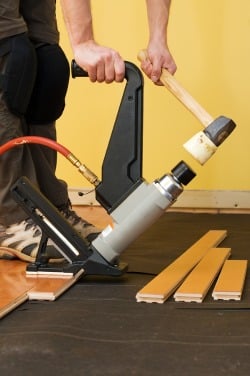 Whether your customer is building a new home or renovating an old one, it’s a fair guess that they may want hardwood floors. That’s no surprise because hardwood floors are known for their durability, beauty and cost effectiveness. Not to mention the re-sale value of a home with hardwood vs. one without. Buyers LOVE hardwood. It’s easy to clean, maintain, and if you have good quality hardwood, you can refinish it several times without having to replace it. This is especially attractive to those consumers concerned with sustainability. With all the benefits that hardwood has to offer, the questions begs, why wouldn’t you choose hardwood?
Whether your customer is building a new home or renovating an old one, it’s a fair guess that they may want hardwood floors. That’s no surprise because hardwood floors are known for their durability, beauty and cost effectiveness. Not to mention the re-sale value of a home with hardwood vs. one without. Buyers LOVE hardwood. It’s easy to clean, maintain, and if you have good quality hardwood, you can refinish it several times without having to replace it. This is especially attractive to those consumers concerned with sustainability. With all the benefits that hardwood has to offer, the questions begs, why wouldn’t you choose hardwood?
As any contractor knows, the underlayment and sub-floor rank as high as the actual hardwood in order of importance in a hardwood installation project. A properly prepared sub-floor with correctly installed underlayment will make all the difference in the end result. Accurately installed sub-floors and underlayment will provide the extra layer of cushion for the hardwood and prevent the floors from developing those annoying squeaks and groans you have heard them make in older homes.
It’s important to note that underlayment is not the same thing as a sub-floor. An underlayment lies between the sub-floor and the actual hardwood flooring material. The purpose of the underlayment is to provide a cushion between the imperfections of the sub-floor which is generally very rough, so that the hardwood can be installed on top of a smooth, inflexible surface. As a result, the hardwood floor will rest on top of this cushion which essentially provides extra support. Because the hardwood isn’t actually very thick, the underlayment provides an extra layer of foundation and protection.
Now that we understand the role and importance of underlayment, we are ready for installation. We have created an eGuide to provide a checklist to help make your project run a lot smoother.
.svg.png)

